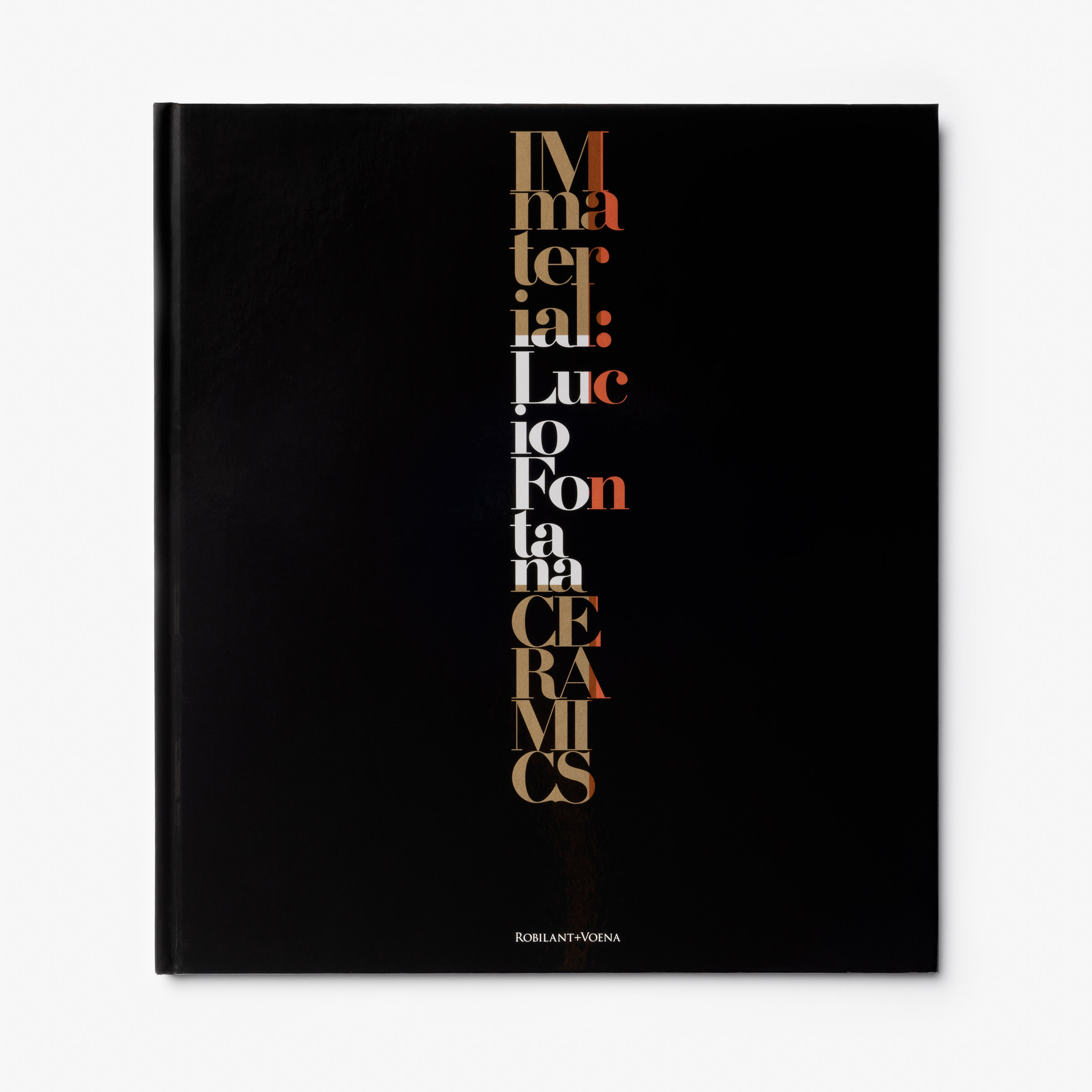Lucio Fontana
b. 1899, Rosario de Santa Fé, Argentina
d. 1968, Comabbio, Italy
Concetto Spaziale, Attese (Spatial Concept, Waiting)
1961
Water-based paint on canvas
27 x 46 cm (10 5/8 x 18 1/8 in.)
Provenance
Luigi Monti;
Generoso Dapice;
Studio Marconi, Milan;
Private collection, Milan
Literature
E. Crispolti, Fontana. Catalogo generale, Milan, 1986, II, p. 431, no. 61 T 41.
E. Crispolti, Lucio Fontana, Catalogo Ragionato di Sculture, Dipinti, Ambientazioni, Milan, 2006, II, p. 618, no. 61 T 41, illustrated.
Description
“With one bold stroke he pierces the canvas and tears it to shreds. Through this action he declares before the entire world that the canvas is no longer a pictorial vehicle and asserts that easel painting, a constant in art heretofore, is called into question. Implied in this gesture is both the termination of a five-hundred-year evolution in Western painting and a new beginning, for destruction carries innovation in its wake.”—Erika Billeter, in Lucio Fontana: Venice/New York, exh. cat. Peggy Guggenheim Collection, Venice, and Solomon R. Guggenheim Museum, New York, 2006–7, p. 21
Penetrating the fabric of Lucio Fontana’s pure white canvas, four emphatic and dynamic slashes act as an intense provocation, the artist’s challenge to the very tradition of painting itself. Concetto Spaziale, Attese belongs to Fontana’s iconic series of tagli (cuts), executed in the final decade of his life, between 1958 and 1968. Fontana’s tagli were philosophical gestures, creative rather than destructive: in slicing the canvas open, Fontana transcended centuries of art history bound by the two-dimensionality of the picture plane to reveal the infinity of space beyond, an enigmatic fourth dimension in which he saw the limitless future of humankind in the “spatial era.” Having first pierced his canvased with buchi (holes) in 1954, Fontana spent some years experimenting with surface ornamentation, painting with thick impastos and often embedding glass fragments and glitter into his canvases, before arriving at the serene austerity of the monochrome tagli, truly the apex and purest crystallisation of his audacious, ever evolving formal vocabulary.
Although Fontana experimented with a variety of colours for his monochromatic tagli, he concluded that white was the ultimate hue to attain the sense of limitless, infinite space and radiant luminosity that he wanted to convey with these works. White, the artist said, is the “purest colour, the least complicated, the easiest to understand”, that which most immediately and most successfully conveyed the “pure simplicity” and the “pure philosophy” which preoccupied him in the last years of his career (quoted in Enrico Crispolti, Lucio Fontana catalogo ragionato di sculture, dipinti, ambientazioni, Milan, 2006, vol. 1, p. 79). Indeed, towards the end of his life, Fontana was awarded the Grand Prize at the 1966 Venice Biennale for an installation of twenty white canvases, each with a single vertical incision slashing through their centres. Potent in their simplicity, the pristine white contrasts with the abyss of blackness beneath the slash, which became a “ground zero” of previously unimagined freedoms, ideas, and potentials in the post-war era. Works like the present one, with their slashed surfaces defying the limitations of matter and opening up a fourth dimension, were to Fontana’s way of thinking united in spirit with the astronauts of the era making bold new steps into space; both offer an optimistic vision of man’s role in the unfolding infinity of the universe. “When I sit down to contemplate one of my cuts, I sense all at once an enlargement of the spirit,” Fontana said. “I feel like a man freed from the shackles of matter, a man at one with the immensity of the present and of the future’ (quoted in Luca Massimo Barbero, Lucio Fontana: Venice/New York, exh. cat. Guggenheim Museum, New York, 2006, p. 23). The present canvas thus serves as a powerful tabula rasa upon which the potential for the future is realised in the dance of the artist’s hand.
Fontana added the subtitle 'Attese', meaning 'expectation' or 'hope', to many of his tagli. By adding this word to his standard title of 'Concetto Spaziale', Fontana imbued the boundless infinity he envisaged beyond the thin, elegant chasms of darkness created by his lacerations in the canvas with a sense of buoyancy and freedom. This realm is at once the immeasurable space beyond earth and the limitless capacity of the human mind and imagination. By opening up and redefining the possibilities of art itself, Fontana sought to unlock the parameters of human consciousness, liberating what had been stifled by conventional society. As if to illustrate this point, Fontana has inscribed on the back of Spatial Concept, Waiting the nonsensical equation ‘1+1-31AZ', a playful yet potent reminder of the limitless possibility he felt these Attese possessed.
Please note that the price and availability of the above work are subject to change without prior notice. Where applicable ARR will be added.








